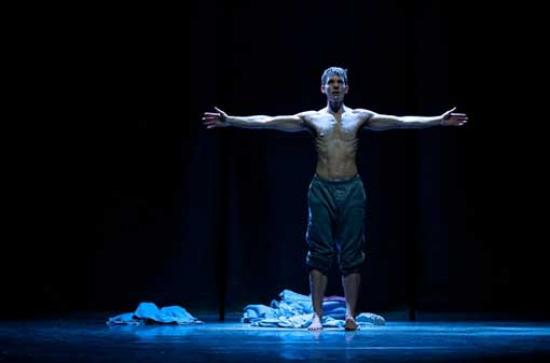
Project dances with the queer body of British peer, Irish rebel and international humanitarian, Roger Casement
The Casement Project a choreography of bodies and ideas that dance with the queer body of British peer, Irish rebel and international humanitarian, Roger Casement, created by Maynooth University scholar Fearghus Ó Conchúir, was today awarded a 1916 Arts Commission by The Arts Council (Ireland).
Dancer, choreographer and PhD student in the Department of Geography at Maynooth University, Fearghus Ó Conchúir, is one of nine projects announced that comprise The Arts Council’s programme as part of Ireland 2016, the official state programme to mark the events of 1916.
Born 1864 in Sandycove, Co. Dublin and executed for treason in August 1916, Roger Casement was an Anglo-Irish diplomat for the United Kingdom, a humanitarian activist, Irish nationalist and a poet. Casement raised funds for the Irish Volunteers in the United States and was arrested at Banna Strand in Kerry on Good Friday 1916 while trying to land arms secured from Germany. Before being tried for high treason at the Old Bailey, British officials circulated diaries, supposedly written by Casement, which detailed homosexual activity — presumably to discredit him as an ‘Irish martyr’. Having being found guilty, Casement was hanged at Pentonville Prison on August 3 1916 — the only leader of the Rising to be executed outside of Ireland.
Fearghus Ó Conchúir commented, “It’s a huge honour and a terrific opportunity to be successful in my project. The Casement Project is ambitious – ambitious for me, for dance, but also for how people could understand their individual and collective potential.”
“The Casement Project is inspired by the queer body of Roger Casement, British peer, Irish rebel and international humanitarian, whose experience reminds us that Ireland’s flourishing has always been linked to the flourishing of disadvantaged people around the world. Casement’s body offers the model for a national body whose identity is dynamic and open to otherness. We want the Casement Project to be a moment when we explore the potential of a new national body, the kind that Casement might have wished for when he came ashore on Banna Strand at Easter in 1916. And we want to celebrate what the diverse bodies of the people of Ireland are capable of 100 years on.”
The project has five interconnected elements: a stage performance presented in Dublin, London, Belfast and Kerry; a celebratory festival of dance on an Irish beach; a dance-film for television and online streaming; an academic symposium in Dublin and in London; and a series of creative engagement opportunities to get all kinds of people involved in the making of the work.
